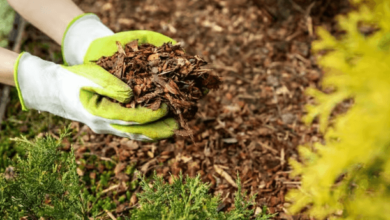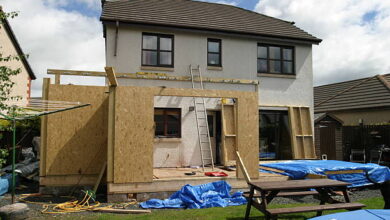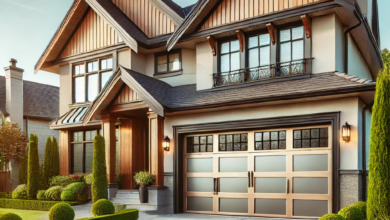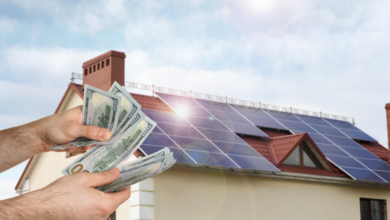Sustaining Roof Integrity: Long-Term Maintenance Strategies After Emergency Repairs

After addressing emergency roof repairs, the focus shifts to maintaining long-term structural integrity. We will explore effective maintenance strategies to ensure your roof remains resilient against future challenges, minimizing the need for further emergency interventions.
Implementing Regular Inspections
Regular inspections from Janson Construction serve as a cornerstone for proactive roof maintenance. Homeowners can identify potential issues early by scheduling biannual inspections, ideally in spring and fall. These inspections include checking for loose or missing shingles, signs of water damage, and debris in the gutters. Addressing minor concerns promptly can prevent them from escalating into costly repairs.
Prioritizing Immediate Repairs
Addressing identified issues promptly is crucial. Whether it’s replacing a few damaged shingles or sealing a small leak, immediate repairs prevent minor problems from worsening over time. Such proactive measures significantly extend the lifespan of your roof and reduce the likelihood of more extensive damage during adverse weather conditions.
Investing in Quality Materials
Choosing high-quality roofing materials is fundamental to long-term roof maintenance. Opting for durable shingles, weather-resistant underlayment, and robust flashing materials enhances your roof’s ability to withstand harsh weather conditions. While initial costs may be higher, the longevity and reduced maintenance needs justify the investment over time.
Ensuring Proper Ventilation
Adequate roof ventilation is often overlooked but is critical in maintaining structural integrity. Proper ventilation regulates temperature extremes, reducing moisture buildup that can compromise roofing materials. It also prevents the formation of ice dams in winter, which can lead to water seepage and damage. Ensuring vents are clear and unobstructed promotes airflow, enhancing the overall longevity of your roof.
Managing Surrounding Vegetation
Overhanging branches and accumulated leaves can threaten your roof’s integrity. Regularly trimming tree branches that brush against or hang over the roof prevents physical damage from falling limbs during storms. Keeping gutters clear of debris also reduces the risk of water pooling and subsequent roof leaks. Proactive vegetation management safeguards your roof against both immediate and long-term damage.
Professional Maintenance Services
Engaging professional roofing services for periodic maintenance is advisable. Roofing professionals possess the expertise and tools to conduct comprehensive inspections and repairs. They can identify potential issues that may be obscure to the untrained eye, ensuring thorough maintenance and extending the lifespan of your roof. Professional maintenance also often includes detailed assessments of flashing, sealants, and overall roof condition, providing peace of mind for homeowners.
Read also: Transform Your Outdoor Space with Patio Builders in Longmont, CO
Regular Roof Cleaning
Regular roof cleaning is essential for maintaining its structural integrity. Debris, such as leaves, twigs, and dirt, can accumulate over time, creating pockets where moisture can collect. This trapped moisture can accelerate the deterioration of roofing materials and promote mold and algae growth, compromising the roof’s durability. Periodic cleaning, either through gentle sweeping or low-pressure washing, helps to remove these accumulations and preserve the roof’s aesthetic appeal and functionality.
Monitoring Interior Signs of Damage
While exterior maintenance is crucial, monitoring interior signs of roof damage is equally important. Water stains on ceilings or walls, musty odors, or visible signs of mold indicate potential roof leaks or ventilation issues. Promptly addressing these interior signs can prevent extensive damage and costly repairs in the future. Regularly inspecting attic spaces and ceiling areas allows homeowners to catch problems early and take proactive measures to maintain their roof’s integrity.
Weather Preparedness and Seasonal Adjustments
Adjusting roof maintenance practices to seasonal changes and weather patterns is critical to long-term upkeep. Before the onset of harsh weather conditions, such as winter snowstorms or summer thunderstorms, homeowners can take preventive measures. This includes reinforcing vulnerable areas, checking for loose shingles or damaged flashing, and ensuring gutters are securely attached and clear of debris. Seasonal adjustments ensure the roof is prepared to withstand seasonal challenges effectively, reducing the likelihood of emergency repairs and extending its lifespan.
Regular Roof Inspections
In addition to regular maintenance tasks, scheduling professional roof inspections every few years is crucial. Roofing experts can assess the roof’s overall condition, identify potential issues early on, and recommend appropriate repairs or maintenance strategies. These comprehensive inspections often include detailed checks of roof components such as flashing, chimney seals, and attic ventilation systems, ensuring that all aspects of the roof contribute to its longevity and performance. Professional inspections provide homeowners with valuable insights into the current state of their roof and proactive steps to maintain its integrity for years to come.
Sustaining roof integrity after emergency repairs involves proactive maintenance strategies that prioritize prevention over reactive measures. By implementing regular inspections, promptly addressing repairs, and investing in quality materials and professional services, homeowners can effectively prolong their roof’s lifespan and minimize the need for future emergency interventions. These strategies enhance structural resilience and contribute to long-term cost savings and homeowner peace of mind.
The longevity of a roof post-emergency repairs hinges on diligent and proactive maintenance efforts. By implementing strategies such as regular inspections, prompt repairs, investment in quality materials, proper ventilation, vegetation management, professional services, regular cleaning, interior monitoring, and seasonal adjustments, homeowners can significantly enhance their roof’s resilience against future damage. These measures not only protect the roof’s structural integrity but also contribute to long-term cost savings and homeowner satisfaction, ensuring peace of mind for years to come.




